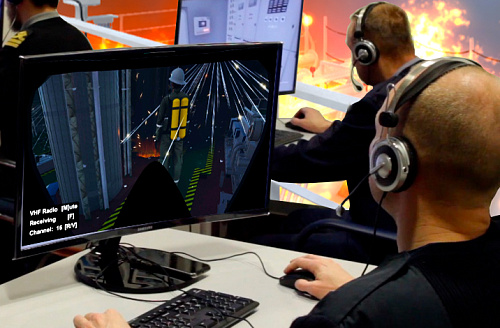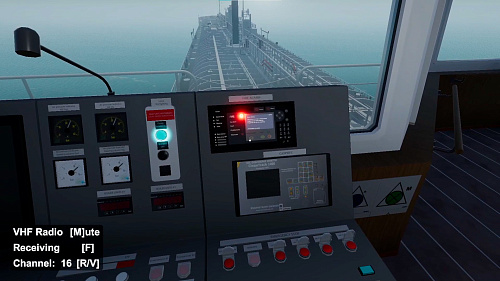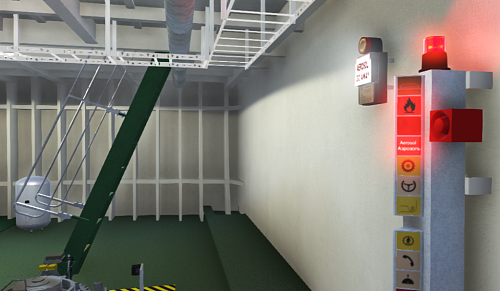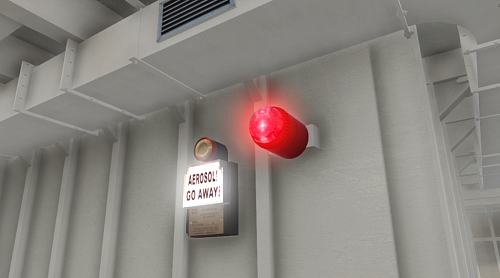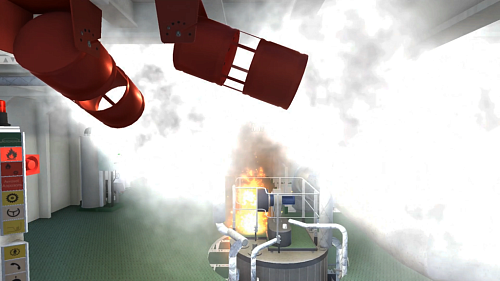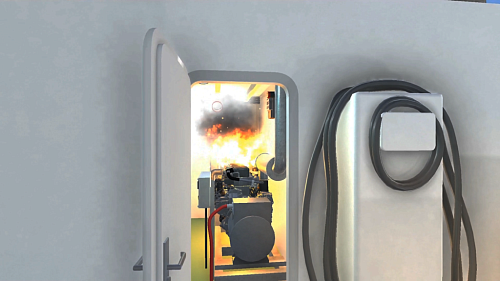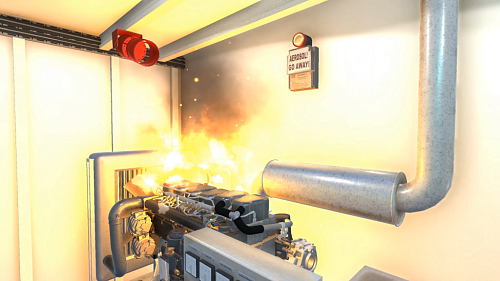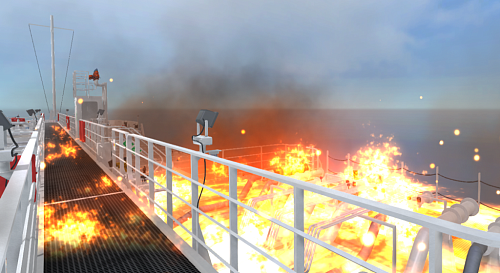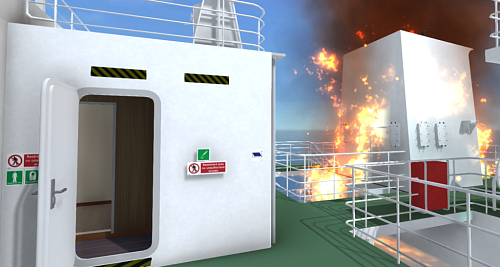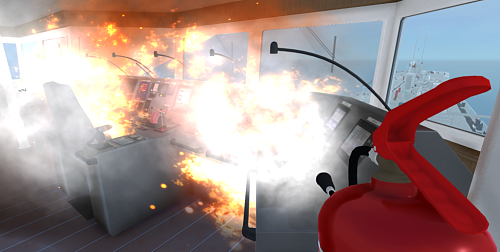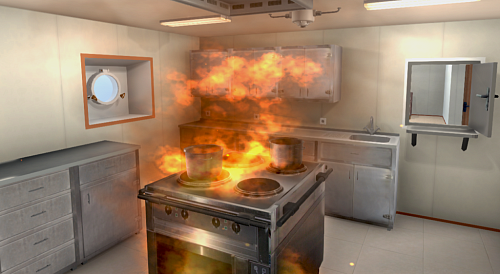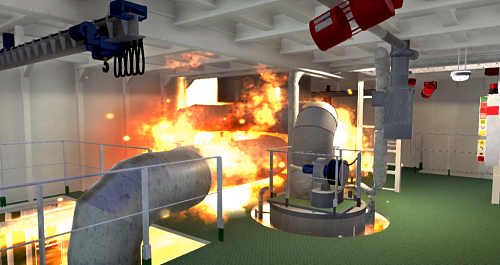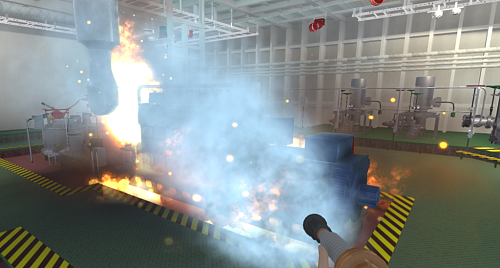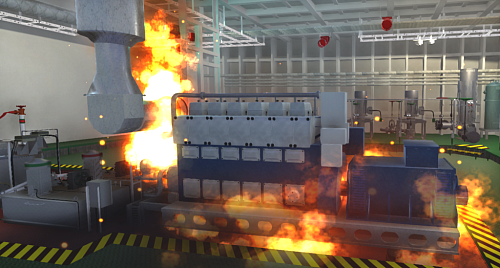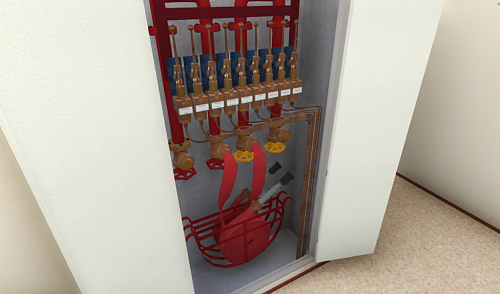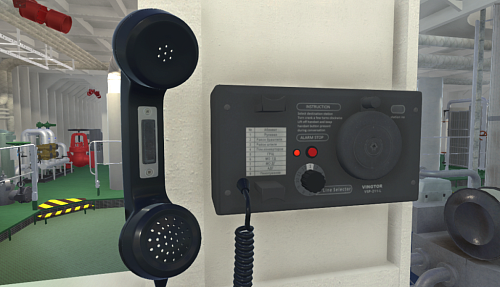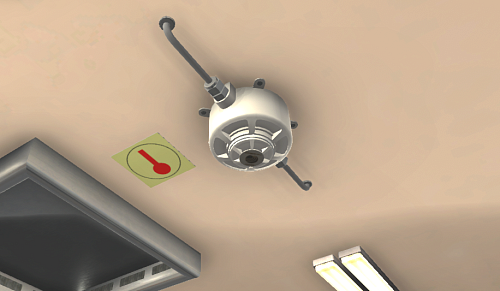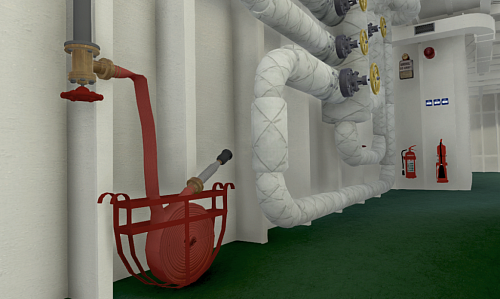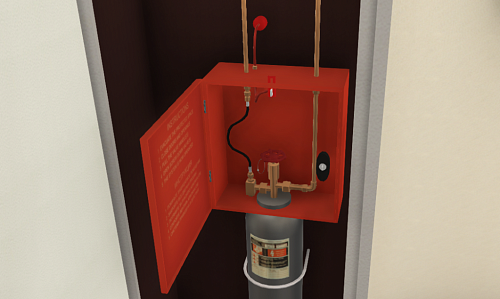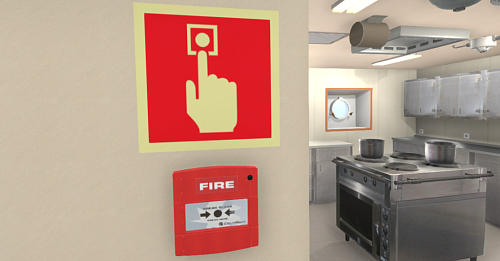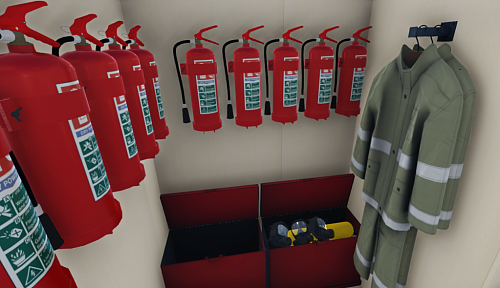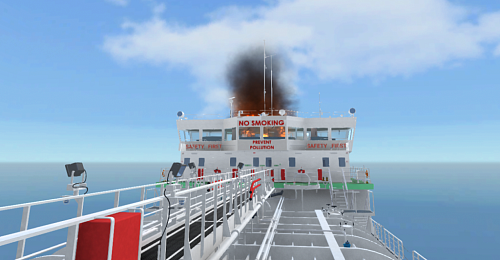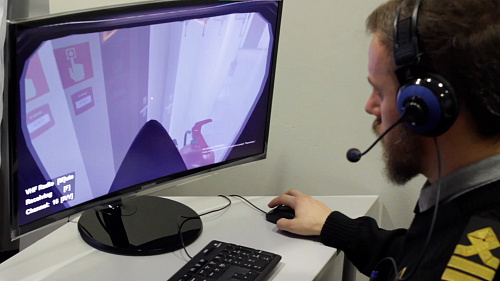Purpose
Advanced Fire Fighting Simulator (AFS) is intended for training officers in advanced firefighting in accordance with Section A-VI/3 of STCW Code requirements in the part concerning control fire fighting operations aboard ships and organization of fire parties.
Knowledge and skills
List of basic knowledge and skills, worked out with the use of the simulator:
- Organization and control of fire-fighting operations;
- Strategies and tactics for control of fires in various parts of the ship;
- Communication and coordination in the process of fire-fighting operations;
- Control of ventilation, fuel and electrical systems;
- The use of fire detection and extinguishing systems and equipment.
3D virtual environment
The detailed model of crude oil tanker is the base of 3D virtual environment that includes external outlines and ship compartments in which the following imitators are realized:
- fire detection and extinguishing systems and equipment;
- fire alarm systems;
- ship communication equipment;
- active elements (water tight doors, portholes, fire and smoke dampers, etc).
Fire classes
Models of different fire classes are realized in the simulator.
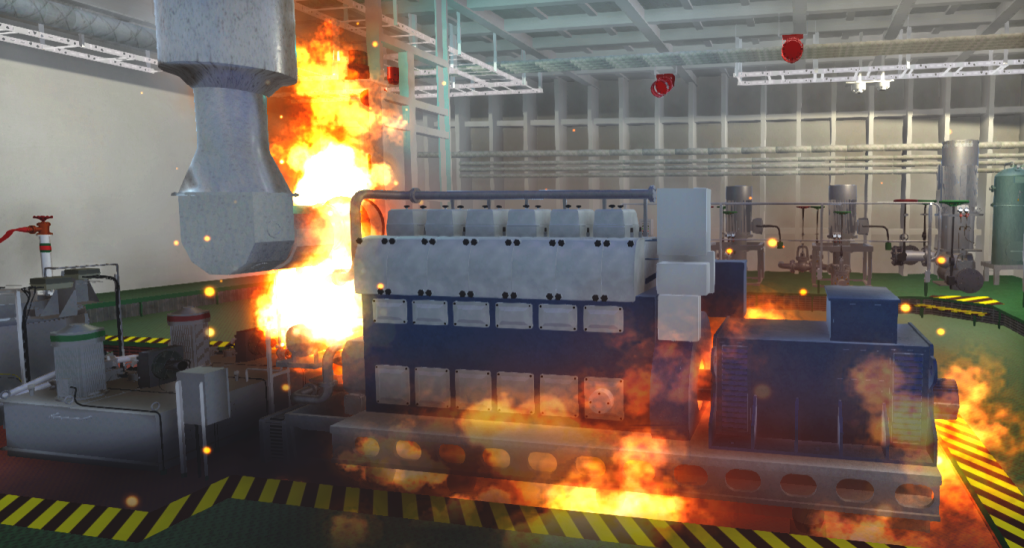
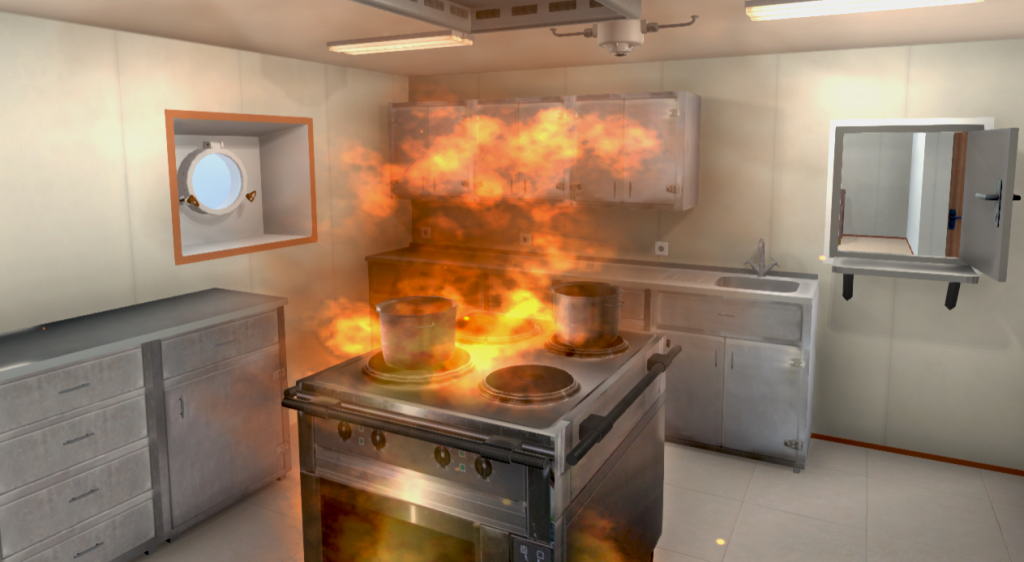
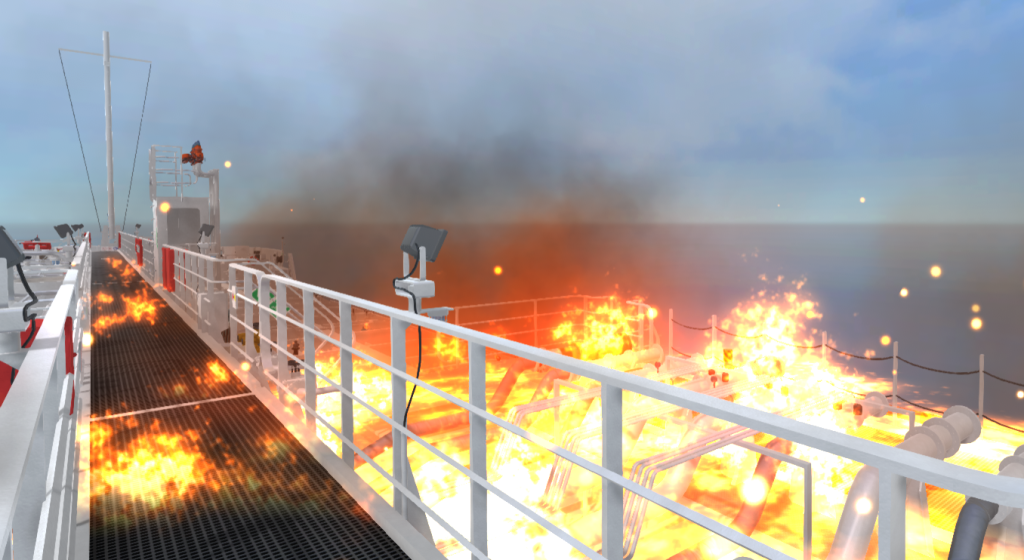
Documentation
Students have access to the ship documentation such as fire plan, contingency plan, etc.
Operational scheme
Practical skills training is performed in 3D virtual environment.
The Instructor enters contingencies and hazards, connected with fire progress on the ship, into 3D virtual environment according to a previously prepared scenario of emergency.
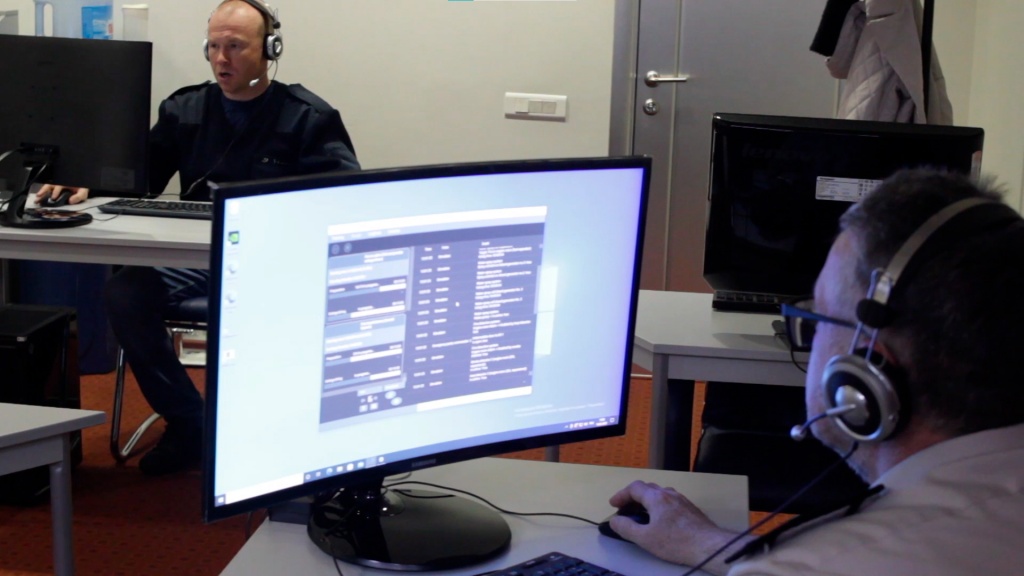
Students, in a team (emergency party), carry out their responsibilities for firefighting depending on duties designated by the Instructor and in accordance with the Emergency Muster List and firefighting plans. Scenario of progress of an emergency situation depends on how correct student’s actions are.
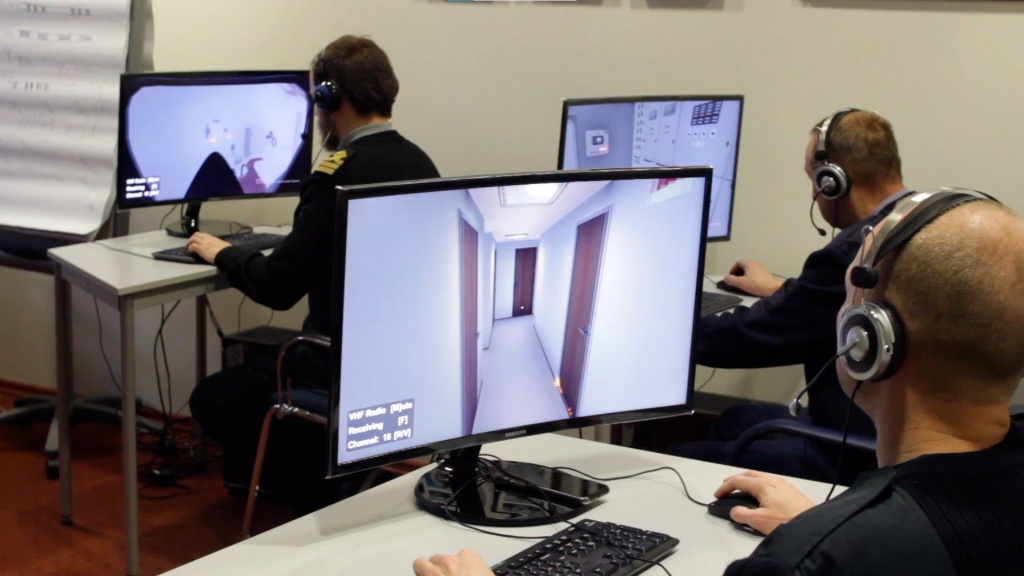
Within the training, students have an opportunity to move around the virtual ship, to apply imitated systems and equipment, to communicate by internal and ship to shore communication system.

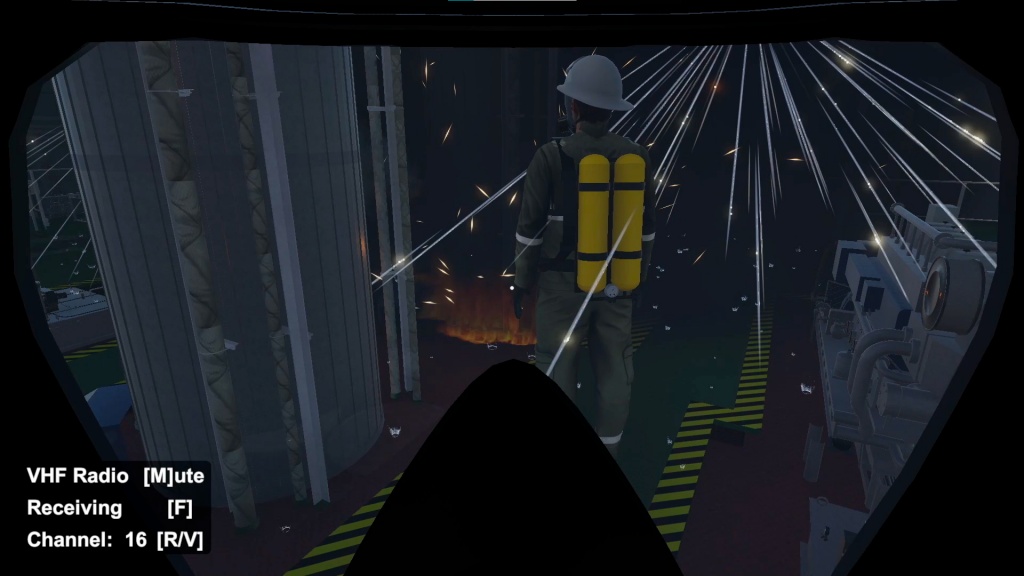
The Instructor controls and monitors each student’s training, in the process of exercises performing actions recording is carried out for the effective debriefing of trainees.
Minimal configuration
The simulator is recommended to be used in configuration of 1 Instructor Workplace, 4 Student Workplaces, including:
- Wheelhouse
- MSB room
- Commander of the fire party
- Members of the fire party
At the request of the Customer, the number of workplaces of students can be increased.
VR technologies
Virtual reality glasses and controllers to perform actions using hands can be used in the simulator.
The simulator provides ship equipment and hazards sounds with a volume that is dependent on the distance from the source and Student location.
The use of VR technology ensures compliance with the general performance standards for simulators used in training listed in Section A-I/12 STCW Code: «Simulator shall have sufficient behavioral realism to allow to acquire the skills appropriate for the training objectives; provide a controlled operating environment, capable of producing a variety of conditions, which may include emergency, hazardous or unusual situations».
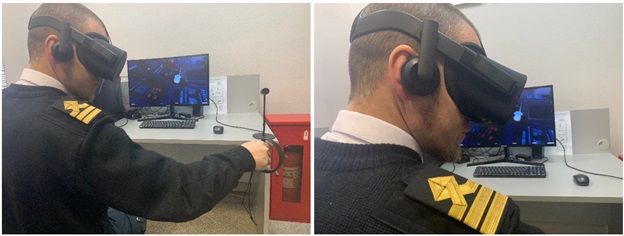
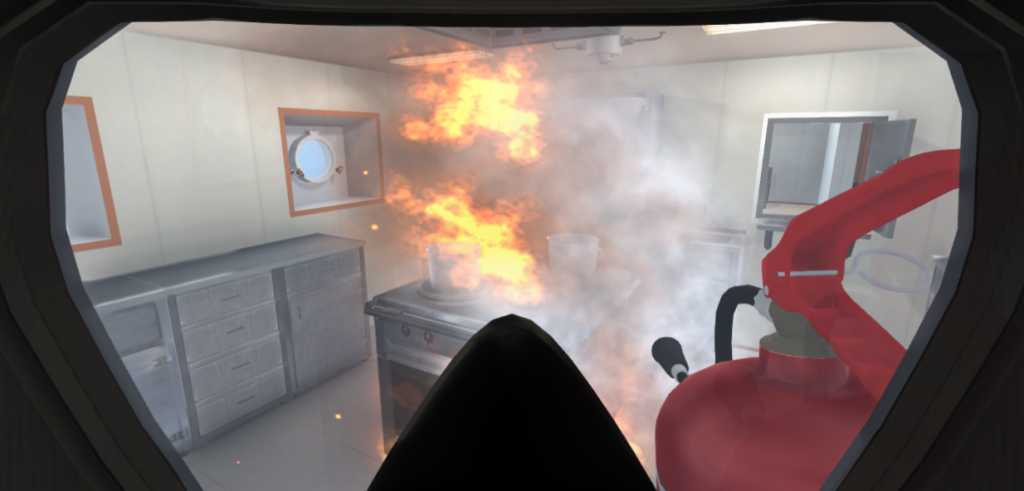
Hardware
To improve the quality of training, at the request of the Customer, the simulator can be supplied with the additional hardware simulated:
- Navigation bridge, including: fire alarm and smoke detection system control panels, GMDSS and other ship communication equipment, and base controls for ship handling;
- Central control room of the Engine compartment; Modified extinguishers and fire hose together with VR devices for drilling practical skills of firefighting.
Fire fighting training center
At the request of the Customer, AFS hardware and software can be integrated into a firefighting training ground.
Additional options
The simulator can be supplied with e-learning modules for theoretical education and Knowledge assessment software for testing.
Regulations
Table A-VI/3 STCW Code
Competence: Control fire-fighting operations aboard ships
Competence: Organize and train fire parties

